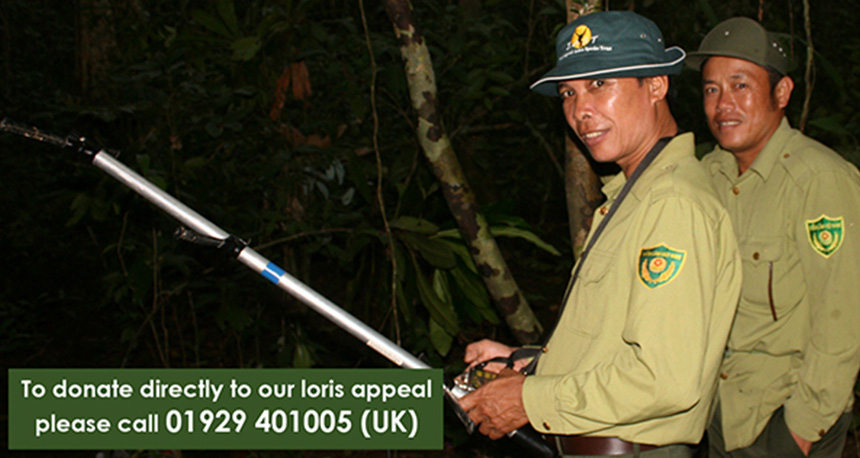
Loris tracking kit appeal
Please help us. This wet season four more rescued pygmy loris will be ready for release: Mimi, Khanh, Sun and Phan.
We need to raise at least £1,000 for their tracking collars and a monitoring team led by our primate tracking expert Vo Thanh Binh.
If confiscated animals are returned to the wild with no health assessment, rehabilitation or release rule sit is unlikely they will survive long.
- Since 2009 we have rehabilitated and released 15 rescued pygmy slow lorises (Nycticebus pygmaeus) into secondary forest in southern Vietnam.
- These releases go beyond giving those individuals their freedom back – they are helping establish viable procedures for the release of other pygmy lorises in the future.
We now have a greater understanding of what increases the probability of pygmy loris survival but we need to prove this before we can provide solid suggestions for the Vietnamese government.
Why the collars are key
- Pygmy loris, which is a species on the red list on animals threatened with extinction, are small, weighing on average 400g (just the weight of a tin of beans), and are only active at night. They prefer the thick forest habitat in southern Vietnam, which makes them difficult, even for expert rangers, to track. Radio collars are therefore essential.
- We have been rehabilitating and releasing pygmy lorises for four years and our last releases in 2013 have provided our best tracking results to date. Although one female lost her collar early on, Kiem, the second pygmy loris, is still being monitored several months after being released.
She has settled in a home range around the release site – fingers crossed she is a true survivor.
What we have learnt so far
Physiological and environmental factors can significantly influence pygmy loris survival, including:
- Stress of handling and transfer to the forest: This can compromise the pygmy loris’ judgement. A few days in a pre-release cage at the release site allows the loris to calm down and has proven vital for survival.
This is kept to just 48 hours enough time to reduce stress but not too long to put them at risk from predators such as rats, snakes and monitor lizards.
- Time of year for release: Pygmy lorises do best when released in the rains when more food is available. Therefore when the dry season comes round, the lorises already have an established territory and knowledge of their home range.
Can you help?
Please help us release our next four rescued loris. This will help set up a framework so that, in future, other lorises which are healthy and have not had their teeth pulled out in captivity, can return to the wild with the highest probability of survival.
How?
You can donate… or, if you are a business, help support the march of our new, bespoke pygmy loris keyrings. Do you think you can sell them in your business or provide them as gifts to your customers – to help provide funds and increase awareness for these amazing primates? If so, please contact support@go-east.

